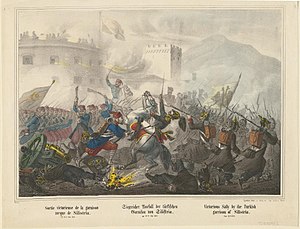
The Crimean War was fought from October 1853 to February 1856 between the Russian Empire and an ultimately victorious alliance of the Ottoman Empire, France, the United Kingdom, and Sardinia-Piedmont.

Pavel Stepanovich Nakhimov was a Russian Admiral in the Imperial Russian Navy known for his victory in the Battle of Sinop and his leadership in the Siege of Sevastopol (1854–1855) during the Crimean War.

The Russo-Turkish War of 1828–1829 was sparked by the Greek War of Independence of 1821–1829. War broke out after the Ottoman Sultan Mahmud II closed the Dardanelles to Russian ships and revoked the 1826 Akkerman Convention in retaliation for Russian participation in the Battle of Navarino.

Count Ivan Fyodorovich Paskevich-Erevansky, Serene Prince of Warsaw was an Imperial Russian military leader who was the Namiestnik of Poland. Paskevich is known for leading Russian forces in Poland during the November uprising and for a series of leadership roles throughout the early and mid-19th century, such as the Russo-Persian War (1826–28) and the beginning phase of the Crimean War. In Russian and general history, he is remembered as a prominent military commander, rated on a par with Ivan Dibich-Zabalkansky, commander of the Russian armies of the same time.
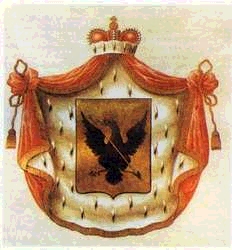
The House of Gorchakov, or Gortchakoff, is a Russian princely family of Rurikid stock that is descended from the Rurikid sovereigns of Peremyshl, Russia.
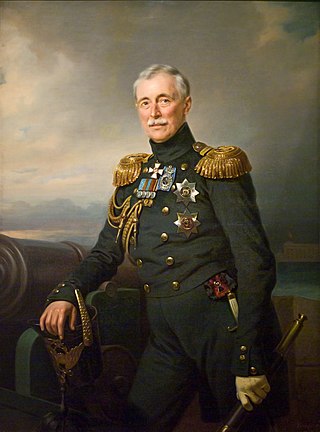
Prince Alexander Sergeyevich Menshikov was a Russian nobleman, military commander and statesman. He was made adjutant general in 1817 and admiral in 1833.

The siege of Plevna or Pleven, was a major battle of the Russo-Turkish War of 1877–1878, fought by the joint army of Russian Empire and Kingdom of Romania against the Ottoman Empire. After the Russian army crossed the Danube at Svishtov, it began advancing towards the centre of modern Bulgaria, with the aim of crossing the Balkan Mountains to Constantinople, avoiding the fortified Turkish fortresses on the Black Sea coast. The Ottoman army led by Osman Pasha, returning from Serbia after a conflict with that country, was massed in the fortified city of Pleven, a city surrounded by numerous redoubts, located at an important road intersection.

Abdülkerim Nadir Pasha (1807–1883), also known as Çırpanlı Abdi Pasha or Abdul Kerim Pasha, son of Ahmed Pasha, was an Ottoman military commander, born in Chirpan, Ottoman Bulgaria.

Omer Pasha, also known as Omer Pasha Latas was an Ottoman field marshal and governor. Born in Austrian territory to Serbian Orthodox Christian parents, he initially served as an Austrian soldier. When faced with charges of embezzlement, he fled to Ottoman Bosnia in 1823 and converted to Islam; he then joined the Ottoman army, where he quickly rose through the ranks. Latas crushed several rebellions throughout the Ottoman Empire, and served as a commander in the Crimean War of 1853-1856, where he defeated the Russians at Silistra (1854), regaining Bucharest and occupying the Danubian Principalities. He also won notable victories at Oltenița, Eupatoria (1855) and participated in the Siege of Sevastopol (1854–1855). As a commander Omer Pasha was noted especially for his excellent strategic skills.

Prince Mikhail Dmitrievich Gorchakov was a Russian General of the Artillery from the Gorchakov family, who commanded the Russian forces in the latter stages of the Crimean War and later served as a Namestnik of Kingdom of Poland from 1856 until his death. His military career included remarkable successes, such as the Battle of the Great Redan, as well as significant setbacks, such as the Battle of the Chernaya.

The Congress of Paris is the name for a series of diplomatic meetings held in 1856 in Paris, France, to negotiate peace between the warring powers in the Crimean War that had started almost three years earlier.

The Battle of Akhaltsikhe during the Russo-Turkish War, 1828–1829, may refer to one of the following. Firstly, an offensive battle under the walls of Akhaltsikhe on August 21, 1828, between 9,000 Russians under Field-Marshal Paskevich on the offensive and 30,000 Turks under Kios-Mahomet-Pasha. The Russians were victorious by a swift and surprise attack in a heavy thunderstorm. They then successfully stormed the Akhaltsikhe Castle after a week-long siege. Secondly, a successful Russian defense of the same fortress by a garrison under General Nicholas Muravyov from a 20,000 Turkish force under Ahmed-Bey on March 3–16, 1829, during the same conflict.

Mustafa Naili Pasha was an Ottoman statesman, who held the office of Grand Vizier twice during the reign of Abdülmecid I, the first time between 14 May 1853 and 29 May 1854, and the second time between 6 August 1857 and 22 October 1857.
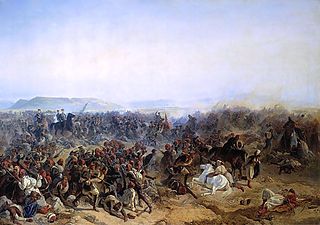
The Battle of Kürekdere took place on 6 August 1854 as part of the Crimean War. The battle occurred when an Ottoman army from the Ottoman fortress of Kars marched out to confront a marauding Russian detachment near the village of Kürekdere in the Trans-Caucasus.

The Battle of Oltenița was fought on 4 November 1853 and was the first engagement of the Crimean War. In this battle an Ottoman army under the command of Omar Pasha was defending its fortified positions from the Russian forces led by General Peter Dannenberg, until the Russians were ordered to withdraw. The Russian attack was called off just when they reached the Ottoman fortifications, and they retreated in good order, but suffered heavy losses. The Ottomans held their positions, but did not pursue the enemy, and later retreated to the other side of Danube.

The Battle of Cetate was fought during the Crimean War. In this battle a large Ottoman force under Ahmed Pasha unsuccessfully attempted to capture the village of Cetate which was controlled by Russian Colonel Alexander Baumgarten.
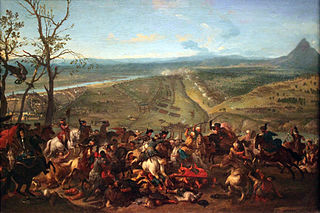
The siege of Belgrade was a successful attempt by Austrian troops under the command of Prince Eugene of Savoy to capture the strategically important city of Belgrade from the Ottoman Empire. It took place during the Austro-Turkish War (1716–1718), barely a year after the Austrian victory at the Battle of Petrovaradin (Peterwardein). The Imperial Army routed the Ottoman relief army under Grand Vizier Hacı Halil Pasha on 16 August. As a consequence, the Belgrade garrison, deprived of relief, surrendered to the Austrians on 21 August. The Ottoman Sultan Ahmed III sued for peace, resulting in the Treaty of Passarowitz a year later, which completed the transfer of the remainder of Hungary, the Banat and the city of Belgrade into Austrian hands.

The siege of Calafat took place in 1854 during the Crimean War. The Russians unsuccessfully besieged the Ottoman army at this place for four months before finally withdrawing.

The Battle of Başgedikler occurred on 1 December 1853 during the Crimean War when a Russian army attacked and defeated a large Turkish force near the village of Başgedikler in the Trans-Caucasus.
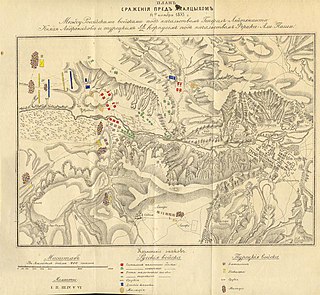
The Battle of Akhaltsikhe occurred on 13 November 1853 during the Crimean War when a Georgian-Russian force of 7,000 defeated a Turkish army of 18,000 men near the Akhaltsikhe fortress in the Caucasus.
